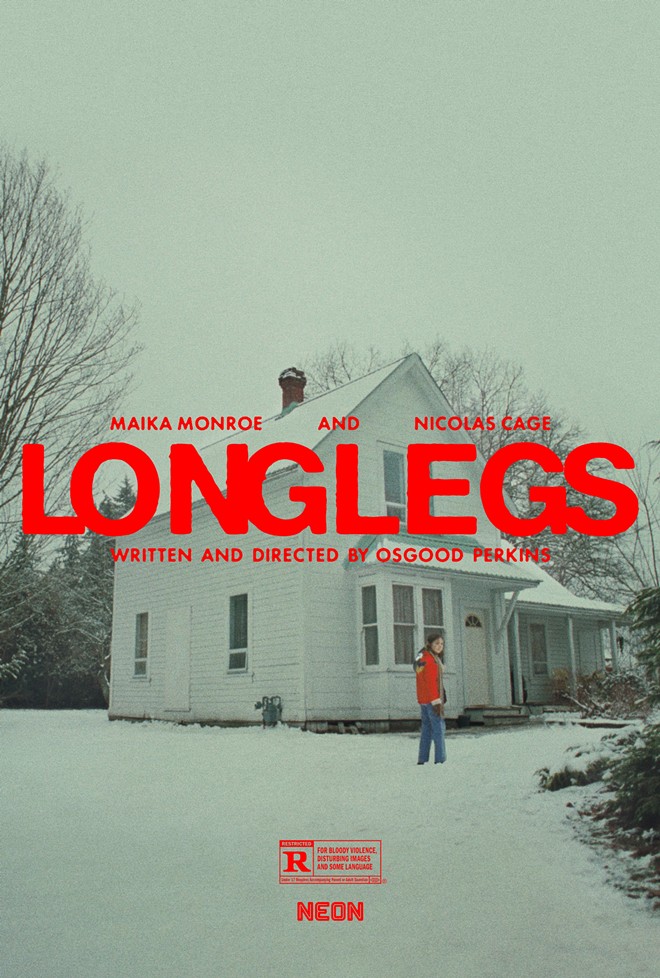Subscribe to our Events Newsletter to get the latest events, straight to your inbox.
Cult Corner: Too much, yet not enough
Much-hyped movie ‘Longlegs’ lets this horror aficionado down
[
{
"name": "Air - MedRect Combo - Inline Content 1",
"component": "11392278",
"insertPoint": "3",
"requiredCountToDisplay": "1",
"parentWrapperClass": "fdn-ads-inline-content-block"
},{
"name": "Air - MedRect Combo - Inline Content 2",
"component": "11392276",
"insertPoint": "7",
"requiredCountToDisplay": "5",
"parentWrapperClass": "fdn-ads-inline-content-block"
},{
"name": "Air - MedRect Combo - Inline Content 3",
"component": "11392277",
"insertPoint": "12",
"requiredCountToDisplay": "9",
"parentWrapperClass": "fdn-ads-inline-content-block"
}
]
Boy, was I wrong.
In February of this year, I devoted a column to the then-upcoming movie “Longlegs,” directed by Osgood Perkins. The intensely creepy and darkly cryptic marketing for the film had generated a lot of hype. A dark supernatural thriller, “Longlegs” was giving major “Silence of the Lambs” and “Seven” vibes. To cap it off, Nicolas Cage was starring as the titular “Longlegs,” the serial killer antagonist wreaking havoc by killing people in what the film promised would be twisted and menacing ways.
I was excited for the film for another reason. Perkins’ previous films — “The Blackcoat’s Daughter” (2015), “I Am the Pretty Thing That Lives in the Ho use” (2016) and “Gretel and Hansel” (2020) — showed intense stylistic promise. Perkins specializes in slow-burn horror, that atmospheric dread which builds over the course of a story, dropping only breadcrumbs of the true terror to come. Though his earlier films weren’t huge hits, they all stood on their own, even when their style outweighed the narrative payoff. If you’re going to traffic in the slow burn, you’d better know how to pay it off.
For “Longlegs,” I was in Perkins’ corner. I’d been recommending “The Blackcoat’s Daughter” to anyone who told me they’d loved “Hereditary” or “The Witch.” When the film’s July release finally came up on the calendar, I got to the theater as soon as I could.
“Longlegs” opens with a single shot. The killer, it seems, is standing in the front yard of a New England home, speaking to someone. His head, however, is cut off by the top of the frame. The audience can’t see the character’s face. After a short monologue that, like Perkins tends to do, keeps the audience questioni ng when the ball will drop, the speaker stoops to put his entire head into frame and — jump cut! The speaker is cut off mid-sentence and the audience is treated to the classic rock staple “Bang A Gong (Get It On)” by T. Rex. How wonderfully anachronistic. Sigh.
Sitting in the theater at that moment, I knew Perkins was taking big risks with the film. If he’d written a script that could back up the stylistic tightrope he’d set up, the film could match the promise of the marketing campaign. If he didn’t, though, it would play off as overly precious. That opening felt, in some ways, very Wes Anderson-esque, and I was worried.
My concern was warranted. The film’s austere acting and setting never wavered and, while this resonated with some of the audience (the film seems to have done fairly well and garnered quite a bit of discussion), it left me flat.
The moments of flamboyance contrasted too heavily with the unwavering anxiety generated by the protagonist’s one-note internal journey, so much so that a major moment in the film felt so out of place that I wouldn’t have batted an eye if it turned out to be something from the Adult Swim show “Tim and Eric’s Bedtime Stories.” The story’s resolution felt both too neat and too predictable.
I’m not giving up on Perkins. He’s too stylistically adept for me to completely swear off his work. Hopefully, though, he finds a better balance between the command of his style and the strength of his narrative.
But, like Levar Burton told us in so many episodes of “Reading Rainbow,” don’t take my word for it. Watch it for yourself.
If you didn’t catch it in theaters, the movie is set to stream on Max this fall.
Thompson, VHS.D, holds a doctorate of cult media in pop culture from University of Maine at Castle Rock. He delivers lectures on movies and other pop culture topics under the moniker Professor VHS. Find him on Instagram as @professorvhs and more of his work at professorvhs.substack.com.























